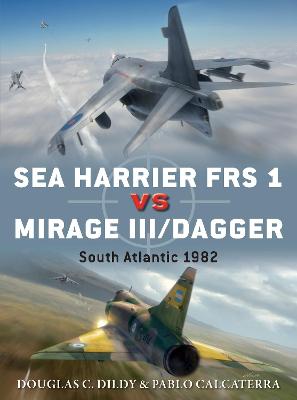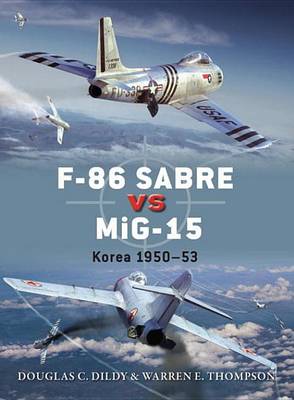Duel
3 total works
Designed following the relatively poor performance of America's multi-role fighters during the Vietnam War, the F-15 Eagle was conceived as a dedicated air superiority fighter. But, having trained for 15 years in the Eagle it wasn't Eastern Bloc operated MiGs that the F-15 eventually came up against, but pilots of Saddam Hussein's Iraqi airforce.
This book analyses the combat between the American and Soviet 'Cold War fighters' in a balanced manner, examining how the technical abilities of the aircraft combined with the different levels of training available to opposing pilots and groundcrews allowed the F-15s to destroy the Iraqi offensive abilities within weeks of the First Gulf War starting. Packed with artwork, illustrations and photographs, this book places the reader in the cockpit during one of the last major dogfighting air wars in modern history.
This book analyses the combat between the American and Soviet 'Cold War fighters' in a balanced manner, examining how the technical abilities of the aircraft combined with the different levels of training available to opposing pilots and groundcrews allowed the F-15s to destroy the Iraqi offensive abilities within weeks of the First Gulf War starting. Packed with artwork, illustrations and photographs, this book places the reader in the cockpit during one of the last major dogfighting air wars in modern history.
Sea Harrier FRS 1 vs Mirage III/Dagger
by Douglas C. Dildy and Pablo Calcaterra
Published 21 September 2017
Following Argentina's military operation to take possession of the Falkland Islands/Islas Malvinas, British Prime Minister Margaret Thatcher's government launched a major naval operation to return them to British rule. Defending the Royal Navy task force were two small squadrons totalling 20 Sea Harriers (SHARs). Initial clashes between SHARs and Argentine Mirages and Daggers on 1 May 1982 failed to eliminate the Sea Harrier defenders. FAA fighter-bomber pilots relied on daring and courageous ultra-low level attacks, frequently escaping the Sea Harrier’s limited capabilities, against Royal Navy warships and auxiliaries, causing considerable damage during Operation Corporate, the large-scale amphibious operation to repossess the islands.
Publishing 35 years after the end of the conflict, this fully illustrated volume offers a balanced and objective examination of the SHAR and the Argentine Mirage and Dagger aircraft, highlighting the attributes of both and the skills and courage of the pilots flying them.
Publishing 35 years after the end of the conflict, this fully illustrated volume offers a balanced and objective examination of the SHAR and the Argentine Mirage and Dagger aircraft, highlighting the attributes of both and the skills and courage of the pilots flying them.
As the routed North Korean People's Army (NKPA) withdrew into the mountainous reaches of their country and the People's Republic of China (PRC) funneled in its massive infantry formations in preparation for a momentous counter-offensive, both lacked adequate air power to challenge US and UN. Reluctantly, Josef Stalin agreed to provide the requisite air cover, introducing the superior swept-wing MiG-15 to counter the American's straight-wing F-80 jets. This in turn prompted the USAF to deploy its very best - the F-86A Sabre - to counter this threat. Thus began a two-and-a-half-year struggle in the skies known as "MiG Alley." In this period, the unrelenting campaign for aerial superiority witnessed the introduction of successive models of these two revolutionary jets into combat. This meticulously researched study not only provides technical descriptions of the two types and their improved variants, complete with a "fighter pilot's assessment" of these aircraft, but also chronicles the entire scope of their aerial duel in "MiG Alley" by employing the recollections of the surviving combatants - including Russian, Chinese, and North Korean pilots - who participated.


